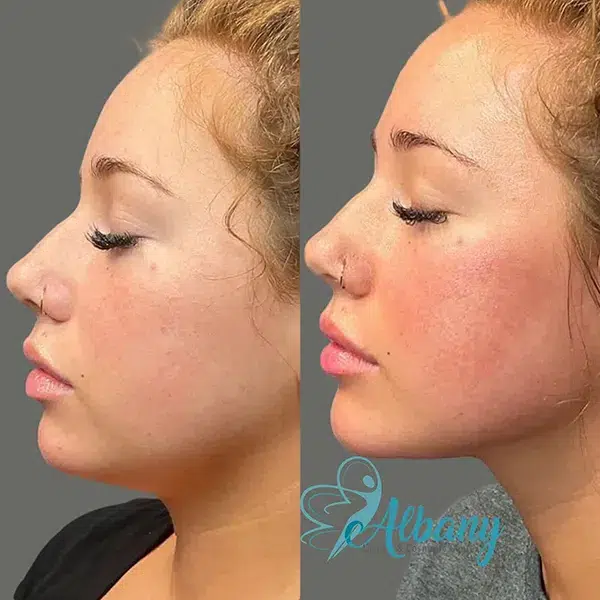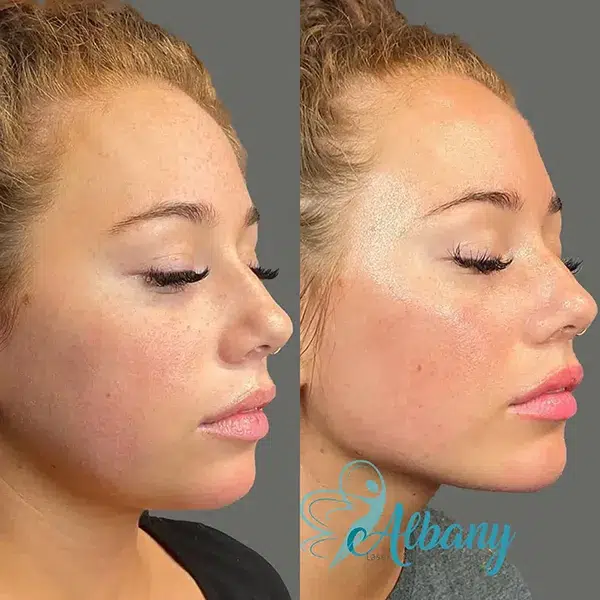Resylate Lyft For Cheek Lift
Restylane Lyft is a hyaluronic acid-based injectable filler that is used for midface augmentation and cheek contouring. It has advanced crosslinking technologies which allow for better integration into the skin for longer-lasting results. The enhanced crosslinking also reduces the chance of post-injection nodules and bumps in the injection area, making it an ideal choice for cheek fillers.
- Restylane Lyft cheek and temples filler is an ideal choice for treating the mid-face area. It provides a long-term lifting effect, with optimal integration that can last up to 18 months. The high strength and good stretch of Restylane Lyft allow it to maintain its structure while volumizing the face in dynamic areas.
- This helps restore any loss of volume due to the aging process, such as deep wrinkles or facial hollows. Additionally, the ease of injection makes this product very convenient for aesthetic purposes. The results are not only impressive but also natural looking since injectable fillers don’t compromise movement or expressions on your face.
- With a safe and effective treatment plan tailored to your individual needs, you can experience an instant lift with visible results that will last over a year. Furthermore, when done in combination with other treatments such as Botox injections, you can achieve more balanced, youthful-looking skin on your face.


Resylane Lyft Alternatives
There are other alternatives to Restylane Lyft that can be used for cheek fillers, such as Juvederm Voluma XC, Teosyal Ultimate, Bellafil, and Radiesse. Juvederm Voluma XC is made of hyaluronic acid, just like Restylane Lyft, but with VYCROSS technology for more natural-looking results. Teosyal Ultimate is also made from hyaluronic acid but with a unique semi-permanent formulation that lasts longer than traditional hyaluronic acid fillers. Bellafill is made from polymethyl methacrylate (PMMA) beads suspended in collagen gel which makes it popular amongst patients seeking long-term results from their facial injections. Lastly, there are Radiesse which uses Calcium Hydroxylapatite (CaHA) microspheres suspended in a water-based gel carrier; this product provides an immediate volumizing effect that lasts several months due to its ability to stimulate natural collagen production in the treatment area over time. Ultimately, the decision on which filler is best suited depends on individual patient needs, such as lifestyle factors and desired outcome timeframe.
Injection Procedure
The Restylane Lyft injection procedure typically involves injecting small amounts of product with a blunt cannula, avoiding any accidental puncturing of vessels or other structures. The cannula is inserted under the skin in a fanning motion to deposit the filler where needed. Aftercare instructions following treatment may include applying arnica cream to speed up healing, avoiding blood thinners such as aspirin and ibuprofen, and avoiding taking vitamin E supplements or foods rich in Vitamin E as they can delay proper healing.
Resylane Lyft Alternatives
There are other alternatives to Restylane Lyft that can be used for cheek fillers, such as Juvederm Voluma XC, Teosyal Ultimate, Bellafil, and Radiesse.
- Juvederm Voluma XC is made of hyaluronic acid, just like Restylane Lyft, but with VYCROSS technology for more natural-looking results. Teosyal Ultimate is also made from hyaluronic acid but with a unique semi-permanent formulation that lasts longer than traditional hyaluronic acid fillers.
- Bellafill is made from polymethyl methacrylate (PMMA) beads suspended in collagen gel which makes it popular amongst patients seeking long-term results from their facial injections.
- Lastly, there is Radiesse which uses Calcium Hydroxylapatite (CaHA) microspheres suspended in a water-based gel carrier; this product provides an immediate volumizing effect that lasts several months due to its ability to stimulate natural collagen production in the treatment area over time. Ultimately, the decision on which filler is best suited depends on individual patient needs, such as lifestyle factors and desired outcome timeframe.
Request Your Appointment Today
Read our privacy policy here